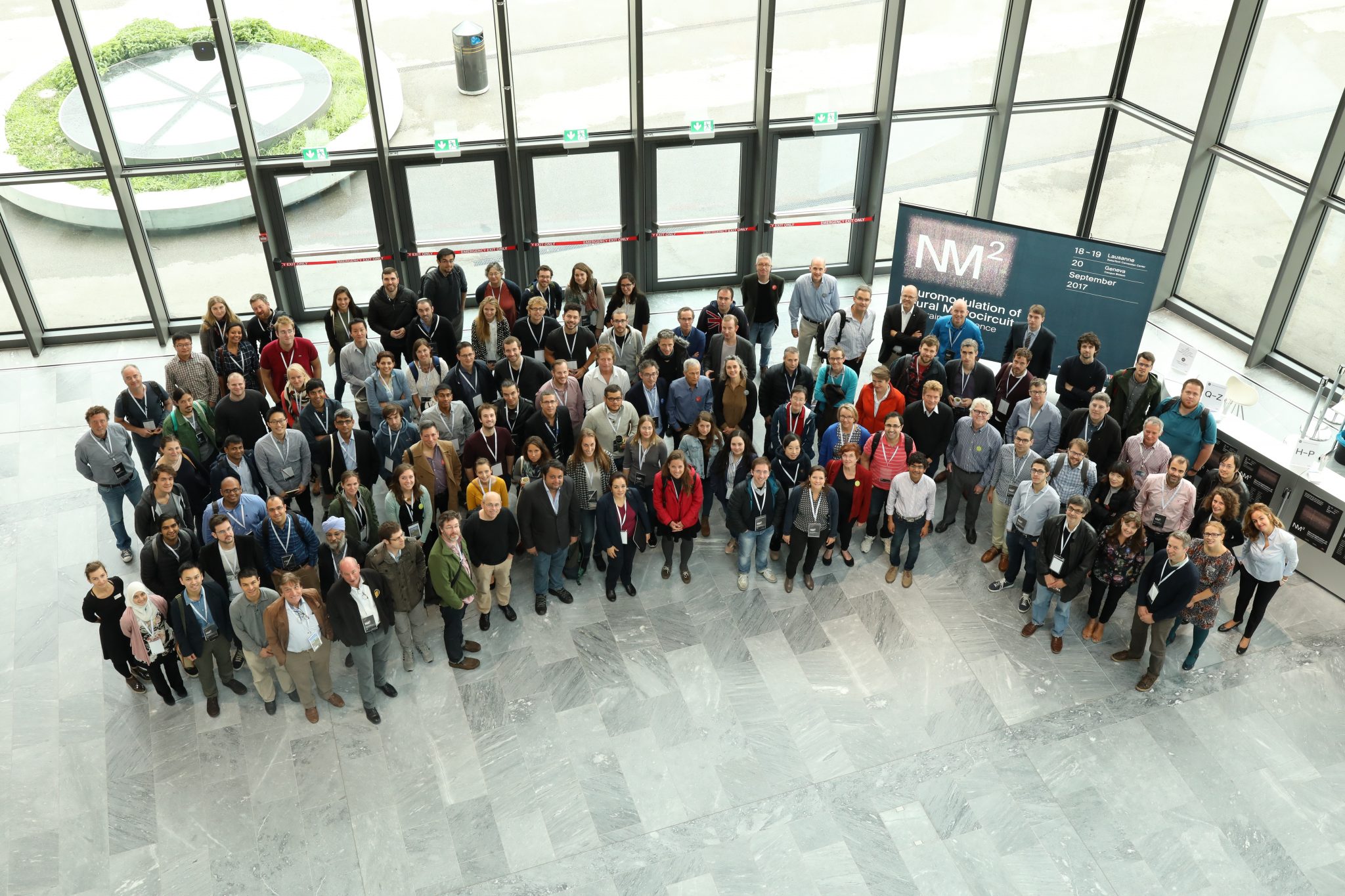
At the end of September, the Blue Brain Project concluded a stimulating, interactive and highly collaborative Neuromodulation of Neural Microcircuits NM² Conference. A global line-up of renowned speakers and more than one hundred attendees from across the different Neuromodulation communities ensured a cross-pollination of experience and expertise throughout the three-day Conference.
Neuromodulators – the master switches – dynamically reconfigure neural microcircuits and shape brain states by controlling the function of neurons and glia, dendrites, and synapses. Recently, the Blue Brain Project discovered that neocortical microcircuit activity shifts from synchronous to asynchronous network states that is tightly controlled by neuronal and synaptic physiology. This effect is strikingly similar to the function of neuromodulators, which control neurons and synapses to sculpt the emergence of brain states.
Therefore, understanding the mechanisms by which neuromodulators operate is not only fundamental to Blue Brain’s pioneering work in simulating brain function and dysfunction, but also the global neuroscience community. Over the three days of the Conference, 34 leading experts in this field presented their current research and enthusiastically participated in panel discussions, as both speakers and participants took part in shaping the future course of neuromodulatory research. Srikanth Ramaswamy, NM² Conference Host said “This meeting is unique in that it focuses on the mechanisms by which diverse neuromodulators could give rise to similar behavioral states by differentially controlling neuronal and synaptic activity.”
With a strategic focus on the neuromodulation of microcircuits, the Conference provided a platform to identify common principles by which different neuromodulators regulate the activity of neurons and glia, dendrites, and synapses. Speaker and day three Chair Randy Bruno said “Biologists have been listening to the raucous activity of neural circuits for a century. Only recently have we begun to appreciate how neuromodulation quietly orchestrates it all”.
The successful NM2 Conference has not only provided a springboard to shape a follow-up event in 2019, but has also laid the foundation towards an international consortium to drive collaborative research in neuromodulation.
Further information on the 2019 Conference will be published on bluebrain.epfl.ch and nm2.epfl.ch.